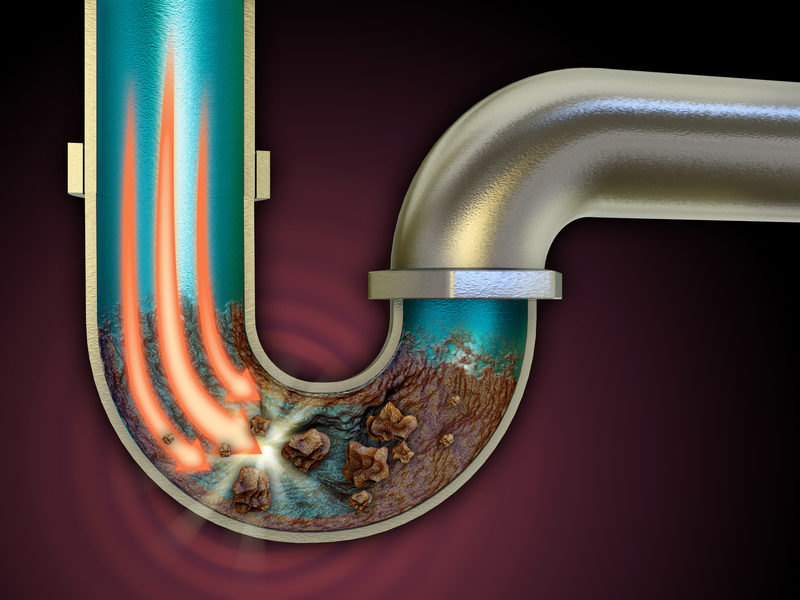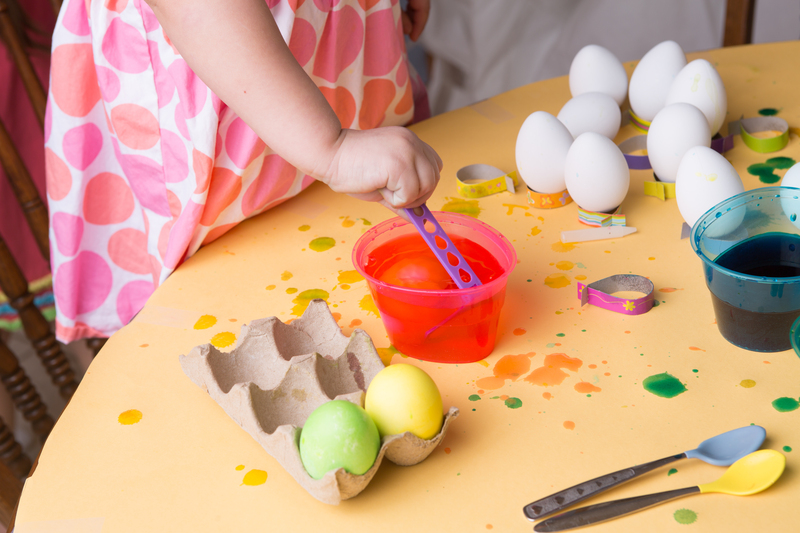A Fresh View: Detailed Mould Cleaning for Window Sills
Posted on 02/06/2025
A Fresh View: Detailed Mould Cleaning for Window Sills
If you are struggling with mould on your window sills, you are not alone. Mould growth is a common problem in many homes and offices, particularly in areas with frequent moisture and insufficient ventilation. Left unchecked, mould not only looks unsightly, but it can also affect your health and damage your property. In this comprehensive article, we will provide a fresh perspective on detailed mould cleaning for window sills, guiding you through everything you need to know--from why mould forms, to the safest and most effective cleaning methods, and how to prevent its return.

Understanding the Causes of Window Sill Mould
Before you begin cleaning, it's crucial to understand why mould develops on window sills. Mould spores are always present in the air, but they need the right conditions to grow: moisture, warmth, and organic material to feed on. Window sills are especially prone to mould because:
- Condensation: Windows are common sites for condensation, especially in bathrooms, kitchens, and bedrooms.
- Poor ventilation: Inadequate airflow around windows allows moisture to linger, creating an ideal environment for mould.
- Organic debris: Dust, pollen, and other debris on window sills supply nutrients to mould spores.
- Damaged seals: Leaky or broken window seals can let rainwater seep in, further increasing moisture.
Understanding these causes is the first step to achieving a long-lasting fresh view free from mould.
Comprehensive Mould Inspection: Look Before You Clean
Before jumping into mould removal, perform a careful inspection of all your window sills. Take time to identify:
- The affected areas: Is mould present only on the sill, or has it spread to the window frame, glass, or surrounding walls?
- The type of mould: Most household moulds appear as black, green, or white spots. Black mould (Stachybotrys chartarum) is particularly notorious for its health risks, but all types should be removed.
- Severity of infestation: Small spots can be safely cleaned at home, while larger outbreaks or evidence of structural damage may require professional intervention.
Detailed Mould Cleaning for Window Sills: Step-by-Step Guide
1. Safety First When Cleaning Mould
Mould spores can trigger allergic reactions and respiratory problems. Always follow these safety precautions before starting any mould cleaning job:
- Wear gloves, a face mask (preferably an N95), and safety goggles.
- Open windows and/or use a fan to increase ventilation during cleaning.
- Wear old clothes that can be immediately washed after cleaning.
- Keep children and pets out of the cleaning area.
2. Gather Your Mould Removal Supplies
To ensure a thorough job, you will need:
- White vinegar (a natural mould killer) or a commercial mould remover
- Baking soda (for scrubbing)
- Spray bottles
- Microfiber cloths or disposable cleaning towels
- Soft-bristled brushes or an old toothbrush for corners
- Bucket of warm water
- Small vacuum cleaner with HEPA filter (for dry debris)
3. Step-by-Step Mould Cleaning Process for Window Sills
-
Dry Cleaning:
Start by using the vacuum cleaner to remove loose dust, dirt, or mould spores. Ensure the vacuum has a HEPA filter to avoid blowing spores back into the air. -
Spray The Area:
Fill a spray bottle with undiluted white vinegar and liberally spray the mouldy sections of the window sill. Allow the vinegar to sit for at least 30-60 minutes. Vinegar is highly effective in killing about 80% of species of mould. -
Scrubbing the Sill:
After the vinegar has soaked in, use a soft-bristled brush or toothbrush to gently scrub the area. Baking soda can be sprinkled onto particularly stubborn spots for extra cleaning power. -
Rinsing and Wiping:
Use a damp microfiber cloth to wipe away mould, vinegar, and baking soda residues. Rinse the cloth frequently and discard any disposable wipes after use. -
Dry Thoroughly:
Moisture is mould's best friend! Use a clean, dry cloth to remove all moisture from the sill when finished. If possible, leave the window open for an hour or use a fan to help dry the area completely.
Alternative Solutions for Mould Removal on Window Sills
Though vinegar and baking soda work well for most situations, sometimes you need stronger solutions:
-
Hydrogen peroxide (3%):
Spray directly on the mould and let it sit for 10 minutes before scrubbing. Hydrogen peroxide is a potent disinfectant and safe for most painted wood and vinyl sills. -
Commercial mould removers:
Many hardware stores offer sprays specifically designed to eliminate black mould and inhibit its return. Follow directions carefully. -
Bleach (for non-porous surfaces):
If dealing with persistent mould on non-porous sills, using a diluted bleach solution (1 part bleach to 10 parts water) is effective. Note, bleach is not recommended for porous wooden surfaces as it can damage them and may not kill mould roots.
Always perform a spot test with any cleaning agent before applying it widely to ensure it won't discolor or damage your window sill material.
Preventing Window Sill Mould: Long-Term Solutions
Once your window sills are sparkling clean, it's important to take preventative measures to keep them fresh and mould-free:
- Reduce excess humidity: Use dehumidifiers or air conditioners, especially in humid climates or rooms prone to moisture.
- Increase ventilation: Regularly open windows or use exhaust fans in areas like kitchens and bathrooms.
- Regular cleaning: Wipe down window sills weekly with a damp microfiber cloth to remove dust and condensation.
- Repair window seals: Inspect and fix any leaks, cracks, or gaps that allow water intrusion.
- Use mould-resistant paint: When repainting, opt for a mould-inhibiting primer or paint for lasting protection.
- Address condensation: Insulate windows or use double-glazing to reduce condensation build-up.
Health Impacts of Mould on Window Sills
Ignoring mould growth on your windowsills isn't just an aesthetic issue--it can have real impact on your health and well-being.
- Allergic reactions: Sneezing, runny nose, red eyes, and skin rash are common symptoms caused by mould spores.
- Respiratory issues: Exposure to mould can trigger or worsen asthma, bronchitis, or other respiratory conditions.
- Mycotoxins: Certain types of black mould produce toxins that can be especially harmful to children, the elderly, and immunocompromised individuals.
If you or your family members experience new or worsening health symptoms, consult with a healthcare provider and consider a professional mould assessment. Never ignore persistent mould problems!
When to Call a Professional for Mould Remediation
While detailed window sill mould cleaning is manageable for small outbreaks, there are times when DIY is not enough. Call a professional mould remediation specialist if:
- Mould covers an area greater than 1 square metre (about 3 feet by 3 feet).
- The window sill is rotting, soft, or shows signs of deep damage.
- Mould has spread into the wall, insulation, or surrounds electrical wiring.
- You have persistent health issues that may be mould-related.
Eco-Friendly Approaches to Mould Cleaning
Many common chemical mould removers contain harsh ingredients. If you want a greener approach for a healthy home, here are options for eco-friendly window sill cleaning:
- White vinegar and baking soda: Safe, natural, and biodegradable.
- Tea tree oil spray: Mix two teaspoons of tea tree oil with two cups of water in a spray bottle, shake, and apply directly to mould. Tea tree oil has natural antifungal properties.
- Lemon juice: Its acidity helps break down mould, although it is less powerful than vinegar.
Note: Even natural cleaners should be tested on your window sills for compatibility, and used in a well-ventilated area.
Frequently Asked Questions: Mould Cleaning for Window Sills
What is the best way to clean black mould from window sills?
For most sills, a combination of white vinegar and baking soda provides an effective solution for black mould removal. Apply vinegar, let it sit, scrub with baking soda, and wipe clean. Rinse thoroughly and ensure the area dries.
Is mould on window sills dangerous?
Mould on window sills can cause health problems, especially in sensitive or immunocompromised people. It is important to remove it promptly and identify the moisture source.
How do I stop mould coming back on my window sills?
The key is to control moisture: improve ventilation, reduce humidity, repair leaks, and keep sills clean and dry.
Can I use bleach to clean mould off wooden window sills?
Bleach can damage porous surfaces like wood and may miss mould roots, causing regrowth. For wood, use vinegar, hydrogen peroxide, or commercial mould cleaners designed for wood.

Conclusion: Enjoying a Fresh View with Clean, Mould-Free Window Sills
Your home deserves clear, beautiful windows and fresh, healthy air. With the right tools, knowledge, and a little elbow grease, you can achieve spotless, mould-free window sills.
- Remember: Always address the underlying causes of mould such as excess moisture and poor ventilation.
- Stay vigilant: Regular cleaning and maintenance are the best long-term defences against mould's unwelcome return.
- Be safe: When in doubt, or when facing large or persistent infestations, do not hesitate to seek professional help.
Take these steps for detailed mould cleaning on your window sills and experience the joy of a fresher, brighter home environment.
Further Reading & Resources
- EPA: Guide to Mould, Moisture and Your Home
- NHS: How damp and mould can affect your health
- CDC: Mould FAQs
Get started today--a fresh view awaits you!




